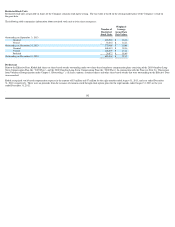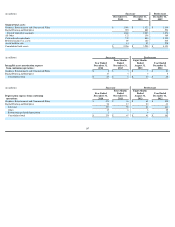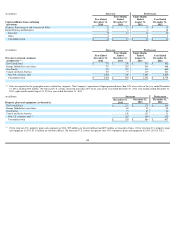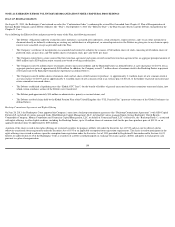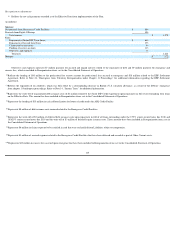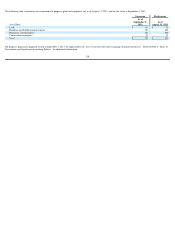Kodak 2014 Annual Report Download - page 115
Download and view the complete annual report
Please find page 115 of the 2014 Kodak annual report below. You can navigate through the pages in the report by either clicking on the pages listed below, or by using the keyword search tool below to find specific information within the annual report.
NOTE 25: FRESH START ACCOUNTING
In connection with the Company’s emergence from chapter 11, Kodak applied the provisions of fresh start accounting to its financial statements as (i) the holders of existing
voting shares of the Predecessor Company received less than 50% of the voting shares of the emerging entity and (ii) the reorganization value of Kodak’s assets immediately
prior to confirmation was less than the post-petition liabilities and allowed claims. Kodak applied fresh start accounting as of September 1, 2013.
Upon the application of fresh start accounting, Kodak allocated the reorganization value to its individual assets based on their estimated fair values. Reorganization value
represents the fair value of the Successor Company’s assets before considering liabilities. The excess reorganization value over the fair value of identified tangible and
intangible assets is reported as goodwill.
Reorganization Value
In support of the Plan, the enterprise value of the Successor Company was estimated to be in the range of $875 million to $1.4 billion. As part of determining the
reorganization value, Kodak estimated the enterprise value of the Successor Company to be $1 billion utilizing the guideline public company method and discounted cash flow
method.
To estimate fair value utilizing the guideline public company method, Kodak applied valuation multiples, derived from the operating data of publicly-traded benchmark
companies, to the same operating data of Kodak. The comparable public company analysis identified a group of comparable companies giving consideration to lines of
business and markets served, size and geography. The valuation multiples were derived based on projected financial measures of revenue and earnings before interest, taxes,
depreciation and amortization (“EBITDA”) and applied to projected operating data of Kodak. The range of multiples for the comparable companies was between .2x-.9x of
revenue and 2.5x-8.0x of EBITDA.
To estimate fair value utilizing the discounted cash flow method, Kodak established an estimate of future cash flows for the period ranging from September 1, 2013 to
December 31, 2022 and discounted the estimated future cash flows to present value. The expected cash flows for the period September 1, 2013 to December 31, 2017 were
based on the financial projections and assumptions utilized in the disclosure statement. The expected cash flows for the period January 1, 2018 to December 31, 2022 were
derived from earnings forecasts and assumptions regarding growth and margin projections, as applicable. A terminal value was included, calculated using the constant growth
method, based on the cash flows of the final year of the forecast period.
The discount rate of 29% was estimated based on an after-tax weighted average cost of capital (“WACC”) reflecting the rate of return that would be expected by a market
participant. The WACC also takes into consideration a company specific risk premium reflecting the risk associated with the overall uncertainty of the financial projections
used to estimate future cash flows.
As the valuation approaches produced comparable ranges of enterprise value, Kodak selected equal weighting of the guideline public company method and discounted cash
flow method to estimate the enterprise value.
112


